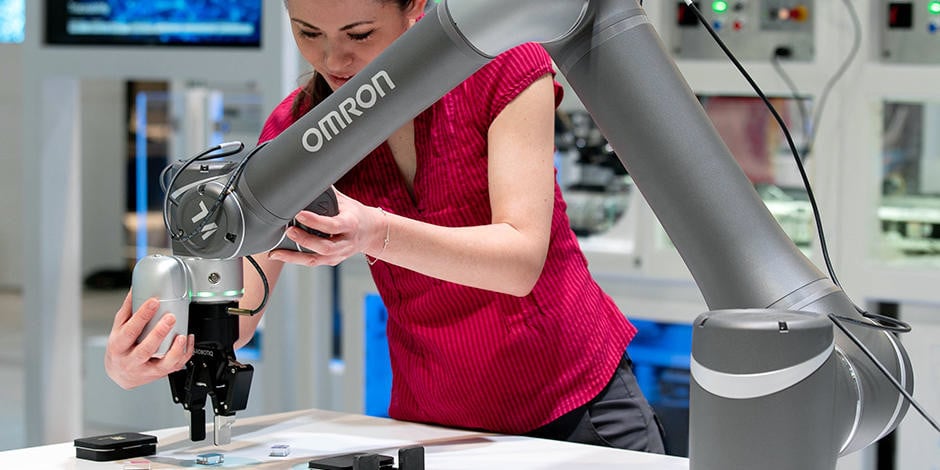By: Roger Mahler
My first experience with robots was in High School; in the mid 1980s our Industrial arts teacher had purchased a 2 axis pneumatic robot kit. It was made of machined aluminum plate and was controlled by air solenoids fired by an Apple IIe computer. The available actions were axis 0 (base)rotated horizontally 0 degrees hard stop or 180 degrees rotation hard stop, axis 2 was extend or retract 90 degrees that pivoted vertically. It had a gripper that had jaws that were about an inch wide and about an inch deep.
They had created widgets out of pieces of wood measuring about 2”x2” square by a ½” thick with a 3” long 1/8 ” dowel sticking out of the center to handle the robot. The robot didn’t move very smoothly often a cylinder would bind up or the air pressure would vary, causing the robot to rotate slow or start slow and accelerate to an abrupt stop as a joint reached the end of its travel, sometimes causing its payload to break loose of the gripper and go sailing across the classroom floor. It was very cool for the time and was interesting to watch, however very low-tech compared to today’s standards.
Sure Controls continues to evolve and offer the best product lines. While Sawyer is part of our history, the future of collaborative robots belongs to the likes of Omron and Precise.
What is a collaborative robot? If you look up the collaborative robot on the internet there are some variations of what it is. The literal definition of collaboration is The action of working with someone to produce or create something, which is the exact purpose of collaborative robots. Most people would think a collaborative robot is a robot that is used without fencing and that can work around humans. Well, yes, this makes it collaborative, but no, it does not make it a collaborative robot.
There are various types of collaborative robots and only, uniquely, one type of collaborative robot can be used without any additional safety features. This type features Power and Force limiting, it can work alongside humans without any additional safety devices. The robot can feel abnormal forces in its path. In fact, it is programmed to stop when it reads an overload in terms of force. These robots are also designed to dissipate forces in case of impact on a wide surface, which is one of the reasons why the robots are rounder. The main feature of these robots is their ability to read forces in their joints. This allows them to detect when abnormal forces are applied to them while they are working. In these situations, they can be programmed to stop or sometimes reverse positions mitigating the initial contact. This means they can respond immediately if they come into contact with a human and even dissipate some of the energy transferred from the impact.
A cobot’s arm “gives” when it encounters an obstruction it will pause and then proceed to continue its task. If it encounters an obstruction again within a short period of time, it will stop and put up an error notification and wait for an acknowledgment. Another interesting feature, hand guiding, allows you to “train” the robot for a task vs. programming through a complicated language. In fact, since these robots can feel forces, you can literally move them and show them positions or paths that they can repeat afterward. While hand guiding helps with human-robot collaboration and ease of deployment it does not make the robot intrinsically safe. The force limiting features mechanically designed into the system with patented force sensors do this.
Economically a force-limited robot is ideal because of its easy programming and integration. When you think about it, no need for fencing or other safety devices, (however a risk assessment should be performed) the programming time is reduced because of hand guiding. You don’t need to change your production line since it is made to work alongside humans. Manufacturing robots used to be limited to high speed, high cost, and hard-guarded applications separating the machine/industrial robots from the operators. This focused deployment on high-volume applications. Today smaller companies with multiple short-run processes can utilize these easy to deploy robots, and move them from task to task as needed.
We also see a collaborative robot as interacting with its human counterparts on the line – by being simple enough for non-engineers to train it by hand, communicating its understanding of the task, illustrating where it’s going next, and other behaviors that help make it just another coworker/Cobot on the line. These solutions allow for companies to keep and grow existing employees providing them opportunities to grow within the company as the collaborative robots are deployed as a tool that automates many tasks companies are struggling to find people to perform.

